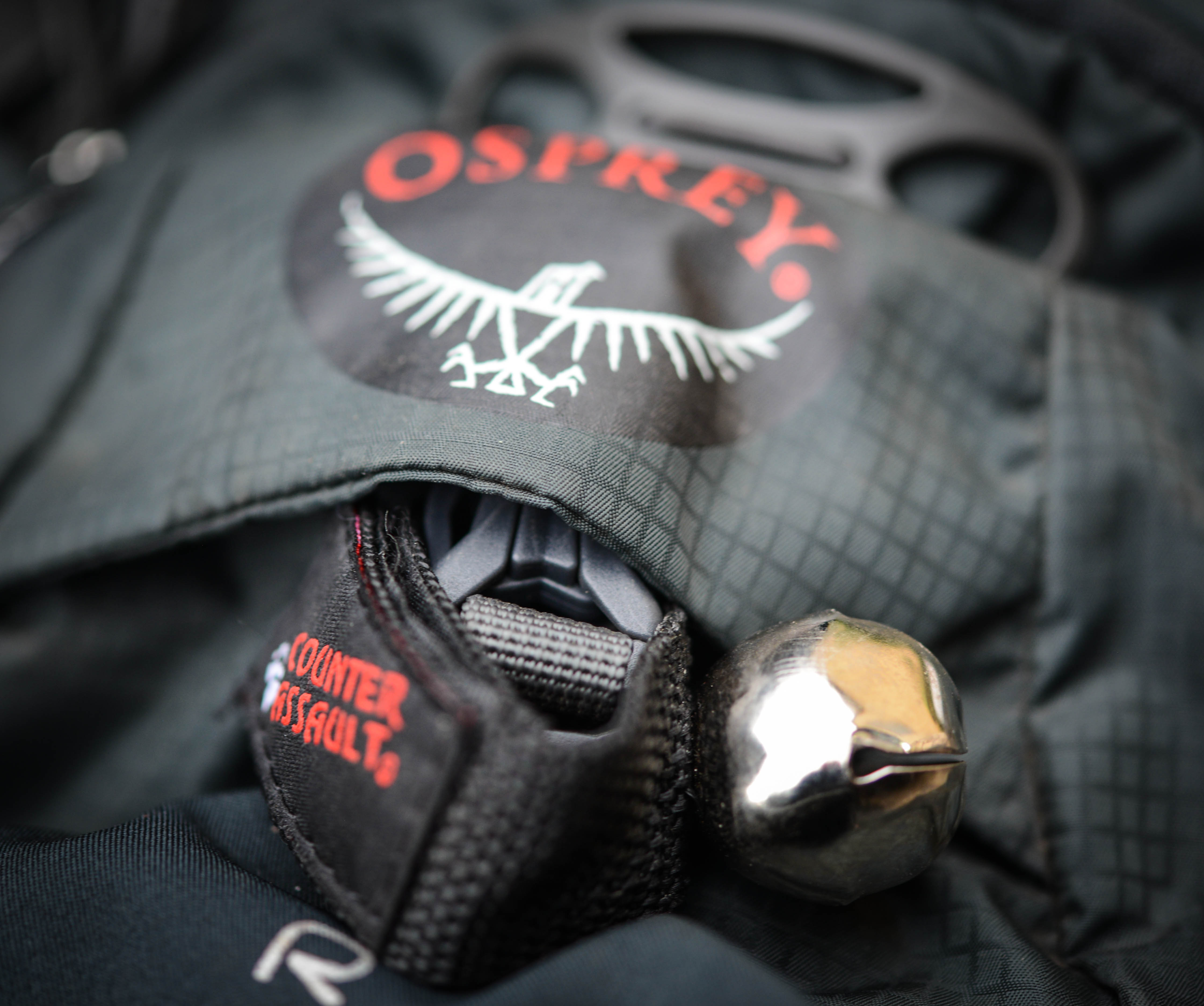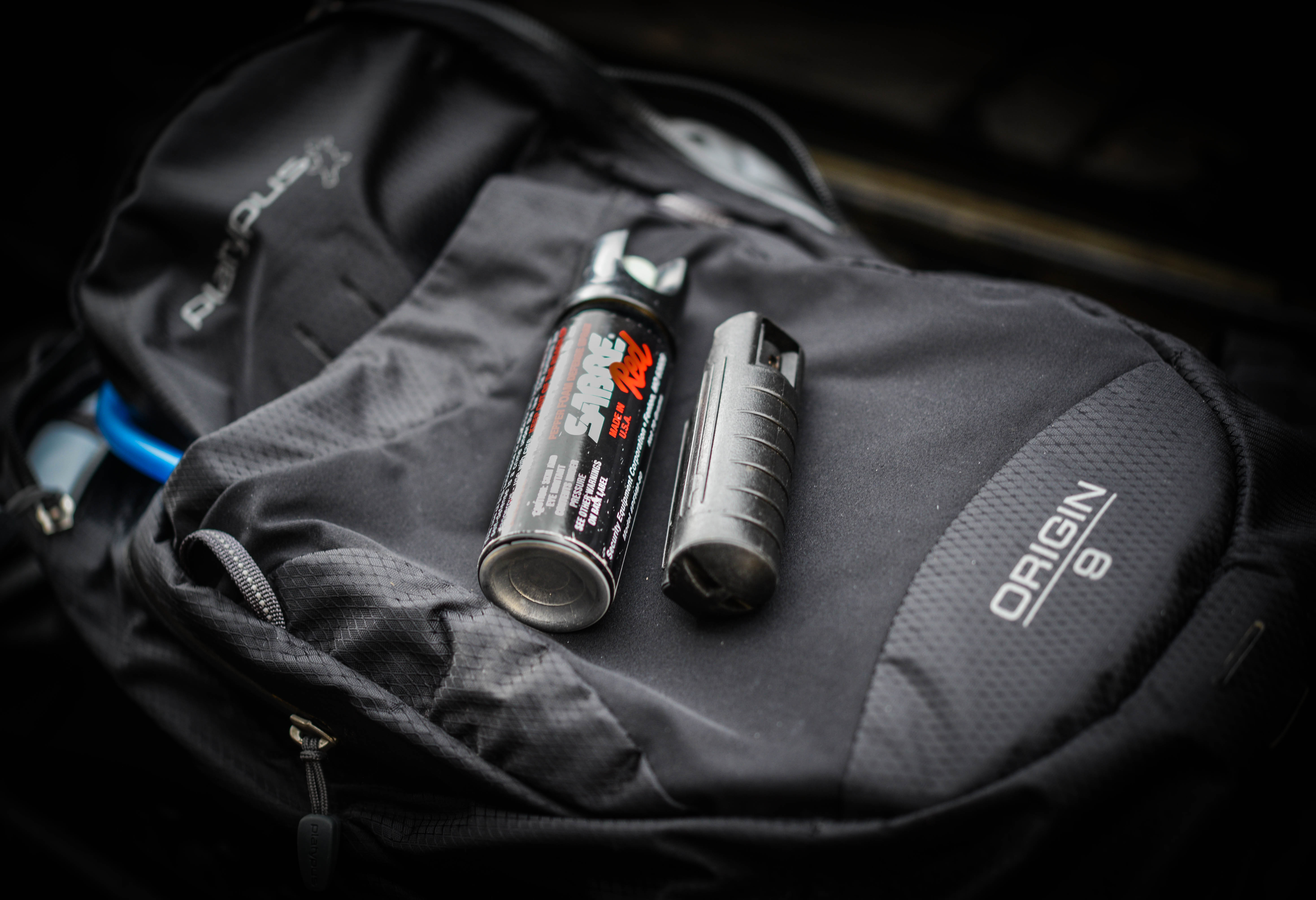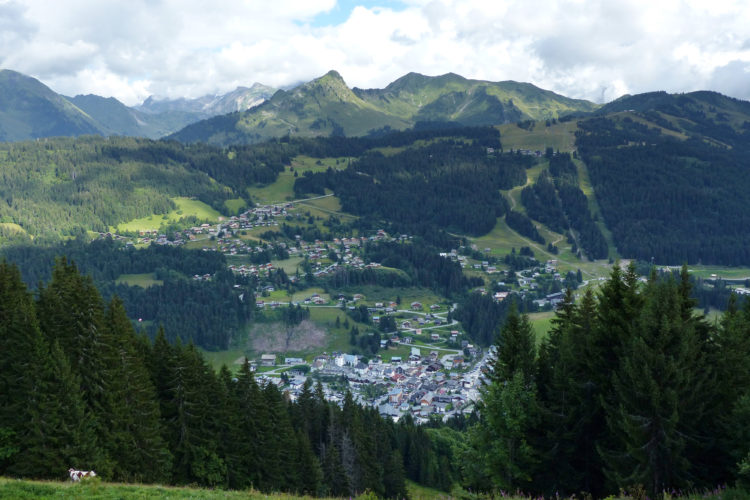Editor’s Note: The opinions expressed in this commentary are Michael Paul’s alone and do not necessarily represent the opinions of Singletracks.com.
The world can be a dangerous place. As you venture into the wild, sometimes alone, many of you may ask yourselves, “should I carry something to protect myself in case something happens to me?” The answer is: yes… probably. It is better to have something and not need it, than need something and not have it. This article isn’t about gun rights or the 2nd Amendment, but about being prepared to defend yourself in the unlikely event something happens to you while riding your mountain bike.
I realize this is a polarizing subject, and has the potential to generate controversy in some circles, but this is a genuine topic. My intent is to spark discussion, and hopefully educate riders about why it is a good idea to be prepared in the backcountry, or on any trail that may be dangerous.

First of all, arming yourself does not mean that you have to carry a firearm. In fact, it does not mean that you have to carry a weapon of any kind if you ride smart. If you generally ride in larger groups during the daylight in safer parts of the world, then your defense is your collective wisdom and sheer number. If, however, you tend to ride alone in very remote wilderness, then arming yourself seems like a logical, Darwinian necessity.
Truly, the initial thing riders have to consider is what they are protecting themselves from. Wildlife such as bears and mountain lions do not commonly attack riders, but they have and they will. Animals can also be aggressive when affected by diseases, such as rabies.
On the other hand, people may pose more of a threat than wildlife. I’m not talking about the belligerent hiker who fails to yield, but rather sexual predators that may be hiding in the woods, squatters on private land, or people manufacturing methamphetamines or other illegal drugs and do not want to be reported. Search the media, and you will find reports of this. Though rare, encountering these types of threats could be deadly.

There is a difference between riding at night in urban areas and riding in the forest, but both have their own hazards. Most of us hopefully associate our rides with being surrounded by the harmony of nature and away from the troubles of the metropolis. The problem is, as we encroach on the habitats of animals, we expose ourselves to a danger that no amount of Lycra can defend against. Being defenseless in the forest where only trees hear your screams is an excellent predatory environment for anyone or anything wishing to do us harm. Complacency kills, and even the familiar can be perilous, as Jeff pointed out in his night-riding article from Atlanta last year.

Consider the following
- Mountain lions kill mountain bikers–In 2004, Mark Reynolds was attacked and killed by a cougar.
- Bears kill mountain bikers–In Alberta in 2007, a 34 year old woman was killed while riding her bike. Just recently Lance Crosby, 63, was killed and partially consumed by a grizzly in Yellowstone while hiking
- Antelopes and deer attack bikers–in this viral video from 2011, an antelope attacked a biker on the trail
- Moose have been reported to attack bikers–In 2014 in Kincaid, AK this moose charged a group of bikers. A similar event occurred in the same place in 2011! Another incident occurred in Montana this year, resulting in a broken arm and other injuries.
- Squatters and drug traffickers attack bikers–Sadly, some of you may live next to a meth lab and not even know it. Many of these are in the woods, near trails, and those responsible for keeping their illicit activities secret may be willing to do anything to keep it that way. I was onced warned by a bike shop while visiting Oahu to not venture off trail for this reason. Two bikers were assaulted by squatters in 2012 and robbed near Johannesburg. Many of you may have also seen this viral video of a rider being robbed at gunpoint in 2014.
- Hiker/Biker Animosity–Sadly, this is becoming more prevalent and can happen anywhere. There are more and more reports of hikers attacking bikers, bikers attacking hikers, and bikers attacking other bikers, often as a result of failure to yield. There are also reports of singletrack sabotage.
- Equestrian/Biker Animosity–Though I have always had very favorable interactions with equestrian users, I occasionally hear about unfavorable ones. If you follow the Facebook page “Downhill Memes,” a user recently posted on 10/17/2015 a story about coming up on an equestrian on a dedicated downhill trail who threatened him with a gun!

“There are lies, damn lies, and there are statistics.” —Mark Twain
The problem with statistics is that they are 100% if you are one of them. It is true that for most of our lives we will live in relatively little danger (thankfully), and this article is not meant to sensationalize the minority of mountain biking/hiking victims that have succumbed to predators. This article is not engineered to strike fear, but motivate preparedness. Not everyone is comfortable with the idea of owning a firearm, much less using one, but there are other ways to project yourself should you encounter a threat on the trail.

Tips for riding safely
- Be prepared–The most dangerous weapon you already own is your mind. Don’t put yourself in a position where you wish that you had done something differently. Trust your gut. If something or someone doesn’t seem right, it probabaly isn’t. Don’t ride alone if possible. Tell others where you are going, and when you will be back.
- Use a Bear Bell–Just like it is a good idea to ring a bell to alert hikers, it’s an even better idea to have a jingly bell that alerts wildlife
- Carry Pepper Spray or Bear Spray–It is rare that I ride alone in remote places, but sometimes it is the only way to get a long ride in. Even when I am riding where there are lots of people, I usually carry pepper spray.
- Consider a firearm in certain places–When I am riding deeper in the backcountry in a small group, one of us usually carries a small .45 (where permitted) even if there are 2-3 of us. To my knowledge, there are no documented bear attacks on humans who are in groups of 4 people or more, but better safe than sorry. Bear attacks are more common in remote areas, of course, such as national parks or deep backcountry such as Alaska or BC. Cougars usually only attack solo riders, but they attack from behind, so you may need to access your gun quickly in order to defend yourself. One of my female friends carries a revolver for this reason, so she does not have to worry about chambering a round if she only has one free hand because a cat is munching on the other one.
 Consider local laws–If you are considering a firearm for any reason, know the law. In Colorado, it is illegal to carry in Open Spaces but legal in National Parks. Regulations vary by state, but vary even more widely by municipality. You can actually open carry in much of Colorado, for example, (visible on your hip), but not in cities or municipalities such as Denver (where you can still carry concealed with a permit). Violators are typically punished by fines, but offenses may carry jail time in places such as New York. I cannot condone this personally, but I know riders who say that paying a small fine is preferable to losing their life in a wildlife attack or assault. As adults, I leave it to you to accept the consequences of your decisions, but I suggest following local laws. Here is an example from Jefferson County’s Open Space policy website, which encompasses a dense collection of multi-use trails in the the Colorado front range west of Denver: “Discharging or carrying firearms, crossbows, fireworks, explosives or projectile weapons of any kind are prohibited except as expressly mandated by Article 12 of Title 18 of the Colorado Revised Statutes, as amended.This includes paintball, BB, pellet, air, blow guns, rockets, crossbows, longbows and slingshots ($300 fine).” National parks, Wilderness, BLM, and other open lands have completely different regulations. National Forest Rules generally state the following: “Discharging a firearm is always prohibited within 150 yards of a residence, building, campsite, occupied area, on or across a road, near or across a body of water, in a cave, or in any manner or place whereby any person or property is exposed to injury or damage.”
Consider local laws–If you are considering a firearm for any reason, know the law. In Colorado, it is illegal to carry in Open Spaces but legal in National Parks. Regulations vary by state, but vary even more widely by municipality. You can actually open carry in much of Colorado, for example, (visible on your hip), but not in cities or municipalities such as Denver (where you can still carry concealed with a permit). Violators are typically punished by fines, but offenses may carry jail time in places such as New York. I cannot condone this personally, but I know riders who say that paying a small fine is preferable to losing their life in a wildlife attack or assault. As adults, I leave it to you to accept the consequences of your decisions, but I suggest following local laws. Here is an example from Jefferson County’s Open Space policy website, which encompasses a dense collection of multi-use trails in the the Colorado front range west of Denver: “Discharging or carrying firearms, crossbows, fireworks, explosives or projectile weapons of any kind are prohibited except as expressly mandated by Article 12 of Title 18 of the Colorado Revised Statutes, as amended.This includes paintball, BB, pellet, air, blow guns, rockets, crossbows, longbows and slingshots ($300 fine).” National parks, Wilderness, BLM, and other open lands have completely different regulations. National Forest Rules generally state the following: “Discharging a firearm is always prohibited within 150 yards of a residence, building, campsite, occupied area, on or across a road, near or across a body of water, in a cave, or in any manner or place whereby any person or property is exposed to injury or damage.”- Practice stringent firearm safety–If you’re packing heat, you certainly don’t want your gun going off inadvertently in your pack and injuring yourself or someone else, so don’t keep a round chambered, keep the safety on, and store it wisely if you choose to ride with one. Keep the pepper spray safety on too… power bars taste awful when laced with mace.
- Get trained–Owning and carrying a firearm does nothing for you if you don’t know how to use one. Practice frequently. I recommend taking a course and completing a concealed carry class if it is allowed in your state. This protects you in many areas where you can only carry a firearm concealed (i.e. a hydration pack), but also provides training and awareness of local laws. You’d be surprised how many “little old ladies” carry them in their purses or in their fanny packs while hiking. 🙂 Know which way the pepper spray fires too… speaking from personal experience, it sucks to get hit in the face with some.

Parting shots (pun intended)
I certainly don’t advocate that everyone carry a firearm while riding trails… in fact, that would be a terrible idea, and would be both dangerous and illegal in many areas. The purpose of this article was to shed light on the dangers that can exist to mountain bikers that we often don’t think about, because the majority of the time, mountain biking is bliss. Furthermore, I hope this piece generates a dialogue with our user base, sharing their experiences and opinions. I do advocate that, within the scope of your local laws and regulations, you arm yourself with something if you are in a position to be vulnerable (alone in the backcountry, sketchy neighborhoods, etc.). Hikers and backpackers are encouraged to take bear spray when venturing into known bear areas, for example–why shouldn’t we, as riders, consummate the same precautions?

Your Turn: How about you? Have you had any situations on the trail where you felt you needed some kind of protection?



















